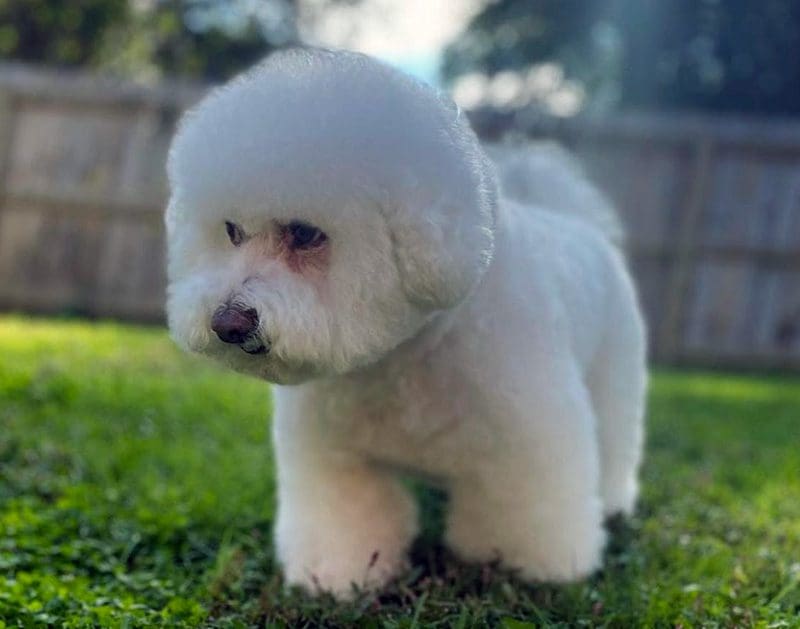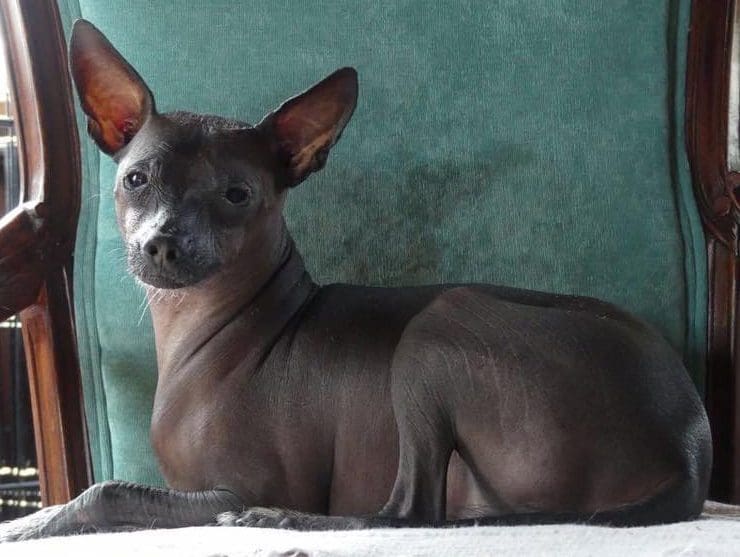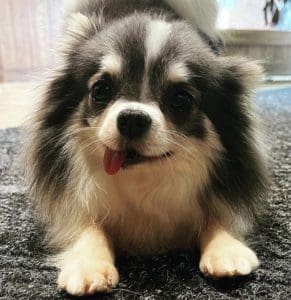
How Often Should You Take Your Dog to the Groomer?
As a professional dog groomer, I am often asked this question. For my clients, the general rule I use for a healthy dog is:
You should take your dog to the groomer at least once every six to eight weeks.
However, taking your dog to the groomer once a month is ideal and will provide the most benefit for your dog.
In a perfect world, you would take your dog to the groomer once a month. This allows for the best grooming experience and provides the most benefit for your dog’s skin and coat.
In most cases, eight weeks would be the minimum standard to keep your dog’s skin and coat maintained. However, there are several special cases depending on your dog’s age, health, coat, and breed.
Puppy Parents Should Visit the Groomer Weekly
Puppy parents should plan to visit the groomer weekly for introductory grooming sessions.
Your puppy’s first grooming appointment, and maybe even his second or third, will probably not be that productive as far as grooming is concerned.
The main goal of these first sessions is to help your puppy feel safe and comfortable during the grooming process.
Grooming can be an overwhelming experience for a dog. Starting them off gently when they are a puppy helps to ensure a lifetime of comfortable visits to the groomer shop.
It’s Good When Your Groomer Gets to Know Your Dog
Any dog of any age will benefit from seeing a knowledgeable groomer more often.
Your dog feels his best when his nails are clipped and his coat and skin are bathed, conditioned, and shined up.
Regular grooming helps your dog’s coat and skin to function at their best which prevents infections and skin damage. This also decreases shedding and keeps your dog warm in winter and cool in summer.
Your groomer may also discover health issues that you can have addressed at your vet.
Some Dogs Require Regular Sanitary Trims
I refer to shaving as any shortening of the coat, whether it is to the skin or half-length.
A sanitary trim is the shaving of a patch of hair around the “bathroom areas” of a dog to prevent urine and feces from catching in the hair.
Some breeds who don’t call for shaving, but have long hair, may need to have this done at least once every four to six weeks to stay clean. A good example of this type of dog is the Australian Shepherd.
Brachycephalic Breeds May Need Shorter Grooming Sessions
Some examples of the brachycephalic breeds are the Bulldog and Pug.
These breeds may need to have their faces cleaned and their sessions kept short to avoid breathing issues and high blood pressure.
A Dog’s Behavior Issues May Require More Frequent Grooming Sessions
Dogs with behavior issues should be taken to to the groomer at least once per month.
A dog who bites when he has his face shaved, or can’t stand to have his feet touched may not be able to have his entire grooming done in one session.
Your dog’s tolerance level and stress during grooming can affect how often you may need to go to the groomer.
If your dog is fearful or aggressive during grooming, he may need to be re-introduced to grooming with weekly sessions.
In these cases, your dog should be treated the same as a puppy experiencing grooming for the first time.
Does Grooming or Leaving the Home Upset Your Dog?
Does your dog hate visits to the groomer or leaving the home in general?
Please check out our article on “How to Calm a Dog Down” for easy ways to help keep your dog’s grooming session as low-stress as possible.


As a professional dog groomer, I am often asked how to calm a dog down. Here are the best products and tips I’ve found over the years.
Grooming Schedules for a Variety of Dog Coat Types
Dealing with Double Coats
There are fifteen coat types in the domesticated dog world. About eighty percent of those are double coats, which is the natural coat.
The closer your dog’s coats is to nature, which is the short to medium double coat, the more he will be able to manage without a professional groomer.
Some examples of the short to medium double coat breeds are Labradors, German Shepherds, and Rottweilers.
The super thick coated Nordic breeds like the Alaskan Malamute and Husky are also considered to have lower maintenance natural coats.
However, the double coated dogs still have a shedding cycle where all that undercoat hair will be left on your furniture, floors, and clothing. This can be greatly reduced by regular grooming sessions.
There will be much less shedding at your home if your dog receives a quality bath which includes conditioning and a deshed treatment using a high velocity dryer.
Double Coats are a No Shave Zone!
Double coated dog breeds should not be trimmed or shaved. This is especially important for the Nordic breeds.
Shaving can permanently damage the dog’s topcoat and will actually make them hotter by producing a more porous and dry coat.
Shaving will also remove the healthy, shiny guard hairs that allow the dog to lift and close the coat when they are too hot or cold.
Take These Long Coated Dogs to the Groomer Every Four to Six Weeks
The Pekingese, Pomeranian, Australian Shepherd, Rough Coated Collie, and Shetland Sheepdog should be taken to the groomer every four to six weeks.
Some of the giants, like the Newfoundland, Rough Saint Bernard, Great Pyrenees, and Bernese Mountain Dog should also be taken to the groomer every four to six weeks.
It’s important to groom these dogs frequently to keep their coats from becoming matted, damaged, and dirty.
Unfortunately, when these dogs go to the groomer less frequently, their coats can become unmanageable for their owners as well as hot and uncomfortable for the dogs.
Take Flat Coated Dogs to the Groomer Every Six Weeks
The Flat Coats are treated like double coats but they have feathering. Some examples of flat coats are spaniels, Golden Retrievers, and setters.
The feathering on these dogs may have dead ends that need to be trimmed. These dogs may also need a sanitary trim and some neatening of their feet.
This is best done at least once every six weeks.
Short Smooth Coats are Lower Maintenance
Some examples of short smooth coated dogs are the Dalmatian, Doberman, German Shorthair Pointer, many of the scent hounds, bully breeds, and the smooth Jack Russell Terrier.
Short smooth coated dogs are usually very low maintenance as far as keeping their coats tidy. However, they still require proper coat conditioning as well as nail trims.
Their ears may also need cleaning, and the routine of being groomed is still something you want them to be comfortable with.
So, I recommend that you take short smooth coated dogs to the groomer once every six to eight weeks.
Some of these breeds are also heavy shedders. If shedding is a concern, taking your dog to the groomer for a proper bath and deep moisturizing once a month will help to lessen what you find stuck to your clothes and around your home.
High Maintenance Dogs that Need to Go to the Groomer More Often
Some coats are considered “hair” and not “fur”. Hair coats keep growing just like the hair we have on our heads.
Dogs with hair coats will need to have their hair cut or shaved.
Yorkies, Shih Tzu, Havanese, Maltese, Komondor, and Pulik (the plural form of “Puli”) all have hair coats.
Curly long hair coats are seen in breeds such as toy poodles, miniature poodles, standard poodles, Bichon Frise, and Portuguese Water Dogs.
These breeds are some of the highest maintenance dogs.
I recommend taking these dogs to the groomer at least once every four to six weeks to keep them in a clean and maintained state.
Smaller dogs need grooming more frequently than larger dogs. This is due to the growth rate of their hair relative to their smaller body size.
Smaller dogs are also closer to the ground and tend to collect more dirt in their coats.
Additionally, if your dog is outside and very active, he will collect more dirt in his coat. This will require more frequent visits to the groomer.


Do Hairless Dog Breeds Need to Go to the Groomer?
Hairless dogs should visit the groomer once a month for a gentle cleansing to remove the excessive buildup of grease on their skin. They should also be thoroughly conditioned and moisturized.
Hairless dog breeds like the Chinese Crested and Xoloitzcuintle deviate from how nature intended dog’s skin to be.
These dogs benefit from knowledgeable care of their skin that will clean and soothe while not disrupting the skin’s equilibrium.
Degreasers and abrasive methods can cause their delicate skin to be damaged or reactive.
The Chaos of the Combination Coats
Dogs like the Goldendoodle, Cockapoo, Maltipoo, Labradoodle, and Schnoodle all have combination coats.
Combination coats can make for chaotic coat condition and quality.
You don’t really know what you’re going to get because the dogs have multiple coat types mixed together.
Sometimes, there is a mismatch between the coat types as they grow. This results in a dog with a coat that doesn’t protect well, is more prone to damage and matting, and is more difficult to groom than the individual breeds used to create the mix.
These dogs should be seen once every four to six weeks at a minimum.
How Often Should Wire-Coats Go to the Groomer?
Wire-coats, like those found in the terrier group, benefit from frequent deshed treatments and handstripping.
When this is done on a regular, frequent basis, these dogs’ coats are not only stunning, but wonderfully protective of the dog’s skin.
Handstripping is a dying art, but it is how these dogs were meant to be maintained.
Their follicles can actually become clogged with dead hair, oil, and skin cells when they’re shaved carelessly or left to become matted.
A properly handstripped dog is very low maintenance for their owner, but the groomer must see the dog often enough to maintain the desired texture of the coat.
It’s unfair to the dog and the groomer if the coat is left unattended. Hours and hours of work are needed to bring the coat back into condition.
The goal should always be to maintain a comfortable and functional state for the dog’s coat throughout their life.
Ideally, if the owners are helping at home with proper brushing and raking of the coat, terriers can be kept looking pretty sharp with a session once every six to eight weeks depending on the texture of the coat.
The tight-coated breeds may need more frequent visits.
When Should I Brush My Dog?
As long as your dog’s fur is not matted, you can brush your dog in between grooming sessions.
This can gently remove some of the dead undercoat and many dogs really enjoy some quality brushing time.
If you’d like to learn more, we have an article all about dog brushes and brushing tips!


We are often asked what the best dog brush is. In this article, we discuss our recommendations for the best dog brushes and brushing techniques for your particular dog.
What If My Dog’s Coat is Matted?
If your dog’s coat is matted, the kindest option may be to have him shaved.
Sometimes a skilled groomer can loosen matting gently using good conditioning and drying technique.
However, brushing mats is uncomfortable, time consuming, and often unfair to the dog and groomer.
After your dog is back to a clean slate, take them to the groomer at least once every 8 weeks to prevent the mats from happening again.
No groomer wants to send home a pink, chilly dog, but mats twist the skin and can even cause pain, bruising, hematomas, and infections.
So, it is kindest and safest to shave underneath the mats and spare the dog any further discomfort.
What if My Dog has Health Issues?
Dogs who are old or sick or have skin issues should go to the groomer at least once a month.
These dogs will need shorter, less arduous sessions.
Taking your dog to the groomer once per month will allow the groomer to learn your dog’s quirks and preferences.
The groomer can then adjust the session accordingly or stop the groom entirely if your dog seems distressed.
I groom pets with terminal illnesses who are kept comfortable and happy with a good bath and nail trim once a month.
Conclusion
For a healthy dog, a good rule of thumb is to take your dog to the groomer every six to eight weeks.
However, depending on the health, age, coat, and breed of your dog, more frequent grooming sessions may be needed.
It’s good when your groomer gets to know your dog.
You can work together as a team to make sure your dog is comfortable, happy, and living his best dog life!
Ready for More Dog Articles?
Please check out our Dog Blog for a full listing of all of our dog articles!
Join Our Mailing List!
We hope you enjoyed reading this article! The Absolute Animal Care Blog features articles that contain our best recommendations for dog and cat wellness, training strategies, and products.
Please join our mailing list to receive updates when new articles are released!
